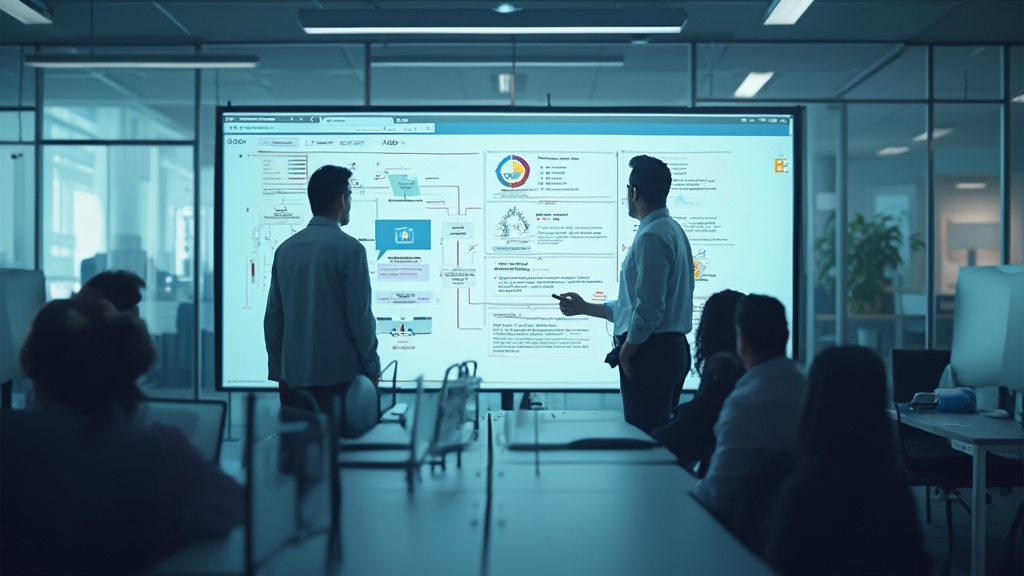Introduction
In an era where operational efficiency is paramount, Robotic Process Automation (RPA) emerges as a powerful tool to streamline workflows and enhance productivity. This comprehensive guide delves into the multifaceted journey of implementing RPA, from identifying the right processes for automation to measuring performance and ROI. By leveraging RPA, organizations can not only reduce operational costs but also improve accuracy and customer satisfaction.
Establishing a robust Center of Excellence (CoE) and adopting best practices for sustainable implementation are crucial steps in this transformative journey. Through practical insights and real-world examples, this article aims to equip the Director of Operations Efficiency with the knowledge and strategies needed to successfully navigate the complexities of RPA and achieve sustained operational excellence.
Identifying the Right Processes for Automation
To establish a successful RPA program, begin by identifying tasks that are repetitive, rule-based, and high in volume. Engaging with stakeholders across various departments will help in pinpointing these tasks. Look for processes that consume a significant amount of time or resources, as automating these can lead to substantial efficiency gains. Mapping out the workflow can provide clarity and highlight areas where automation could deliver the most impact.
The process of implementing RPA can be divided into three stages: digitization, modernization, and transformation. Digitization involves converting existing data and documents into an electronic format, ensuring an accurate representation of the physical world. This stage does not alter or analyze the data but merely encodes it. Next, digitalization utilizes this digitized data to change operations, organizational structures, and decision-making frameworks, enhancing data capture, analysis, and information dissemination. Ultimately, technological transformation combines these new technologies to fundamentally alter how the organization generates value within its supply network.
Integrating RPA positions technology at the center of end-to-end task execution, enabling employees to concentrate on high-value activities that necessitate subject matter expertise. By systematically assessing and reshaping the use of data and digital technologies, organizations can create additional value for themselves, their partners, and their customers. One essential element of this transformation process is accurately assessing the potential return on investment (ROI) for each mechanization use case. This involves evaluating criteria such as the frequency of automated executions, potential monetary value derived, and the time saved by mechanizing tasks. Understanding these factors helps in crafting a robust RPA strategy that aligns with the organization’s objectives and drives efficiency.
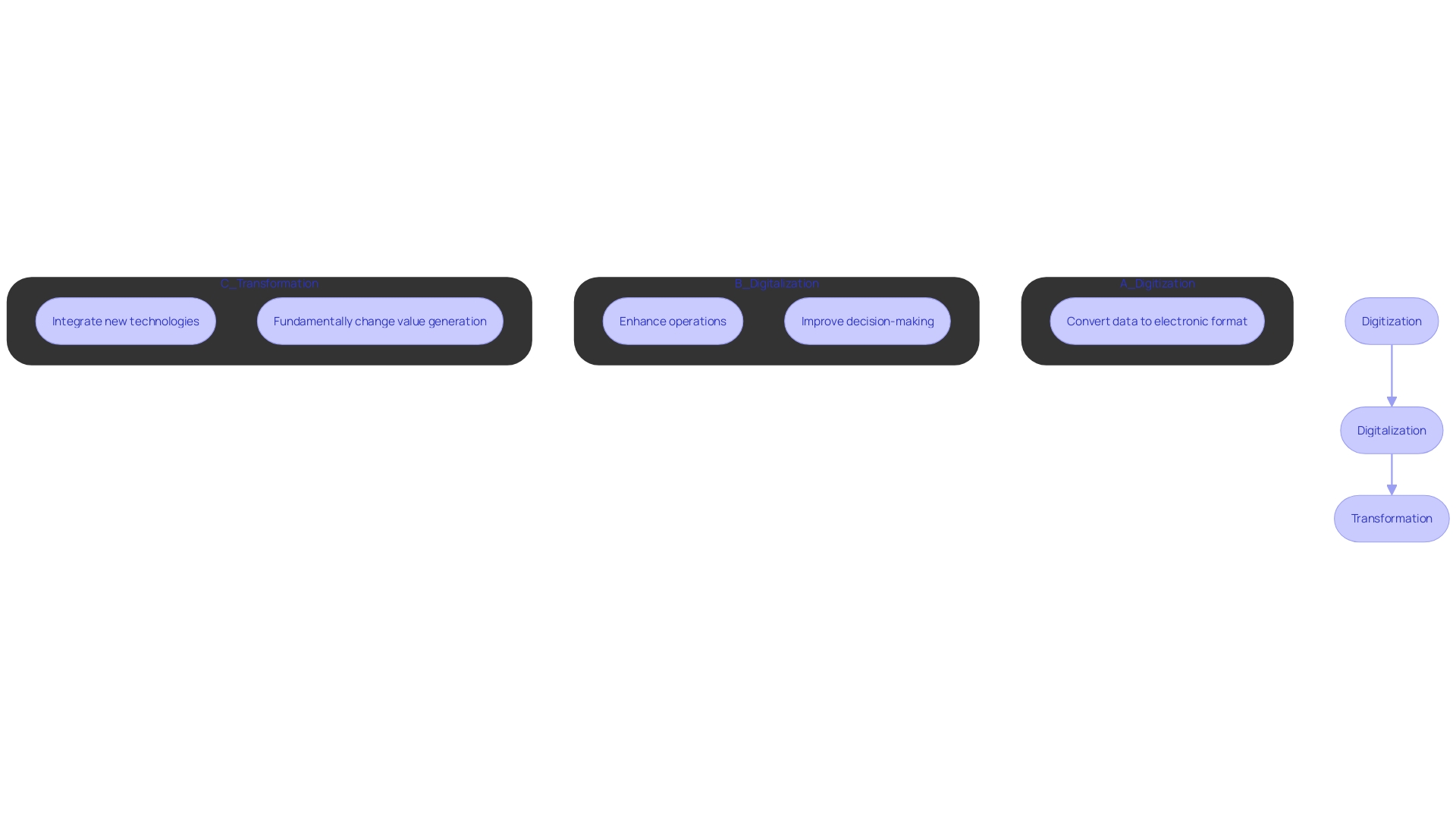
Building a Comprehensive RPA Strategy
Creating a thorough RPA strategy necessitates aligning mechanization goals with overall business objectives. Start by mapping out all relevant processes and identifying key stakeholders and systems involved, such as inventory management or online shop software. Effective strategy formulation begins with defining clear objectives, like reducing operational costs, improving accuracy, or enhancing customer satisfaction. One of the easiest places to start is by automating identity verification and simple order inquiries, which are low-complexity tasks with high ROI potential.
Assess the current technological landscape to determine how RPA can integrate with existing systems. Quantify and assess the quality of use cases for mechanization, much like Tony Stark meticulously crafting his suit. Consider factors such as the frequency of process executions, potential monetary value derived, peak demand periods, and the structure of digital data utilized. For instance, calculate the time spent by a person to complete a task manually versus the time taken to finish it with automation.
Formulate a roadmap that outlines phases of implementation, anticipated challenges, and key performance indicators (KPIs) to measure success. By placing technology at the center of end-to-end execution, you allow humans to focus on providing high-value subject matter expertise. This multi-stage process—beginning with digitization, advancing through digitalization, and culminating in digital transformation—ensures that the organization can effectively leverage new digital technologies to create additional value for itself, its partners, and its customers.
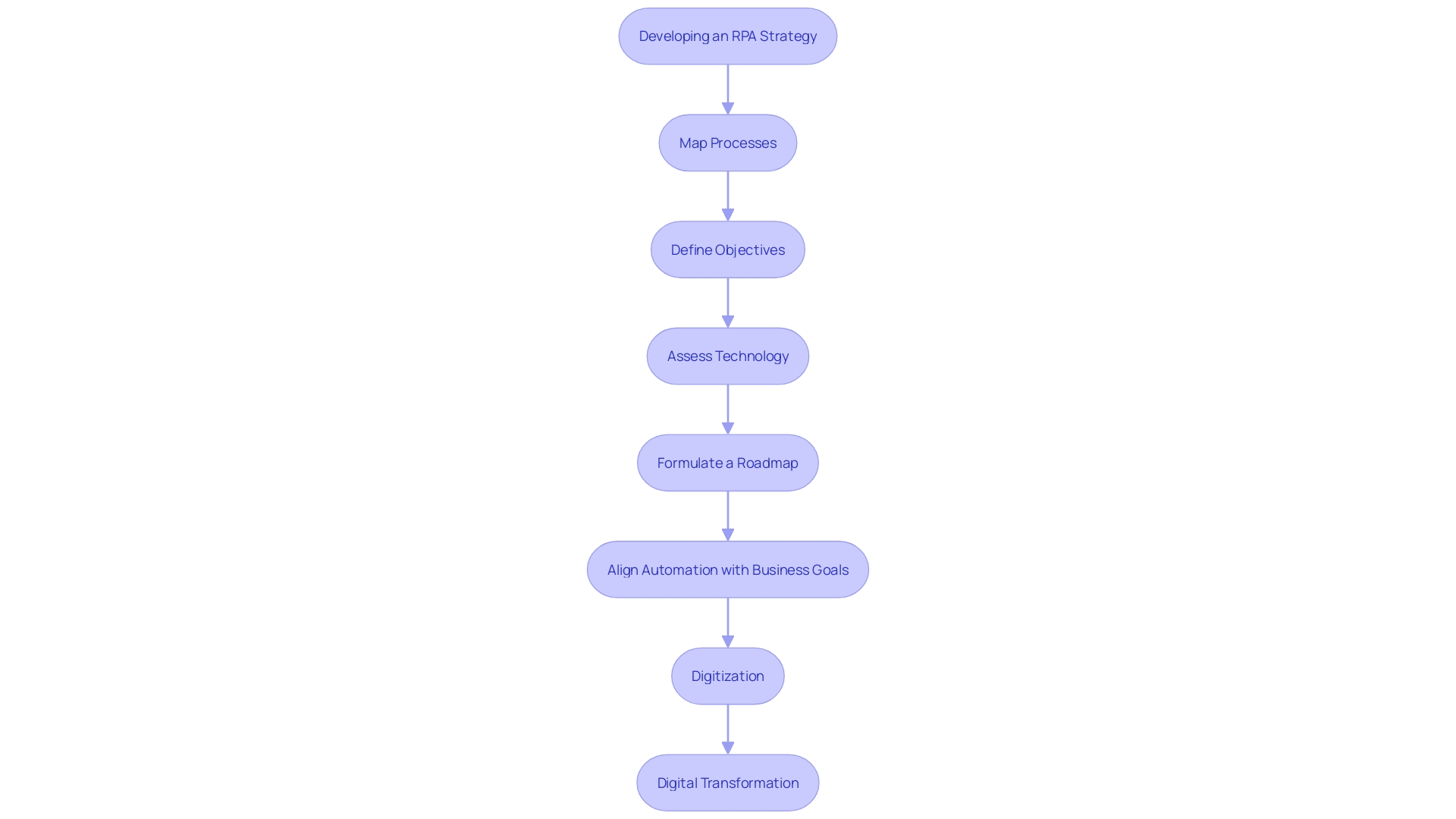
Establishing a Center of Excellence (CoE)
Establishing a Center of Excellence (CoE) is a crucial step for the success and sustainability of any RPA initiative. A CoE should be a cross-functional team dedicated to RPA governance, innovation, and the dissemination of best practices. This team becomes the backbone of RPA implementation, ensuring standardized processes and promoting a culture of continuous improvement throughout the organization.
The CoE acts as a centralized hub, offering comprehensive training and resources for teams aiming to leverage automation. By focusing on governance, the CoE ensures compliance and mitigates risks associated with RPA deployments. Moreover, the CoE fosters an environment where innovation can thrive, allowing the organization to adapt and evolve with the rapidly changing technological landscape.
A well-organized CoE not only enhances operational efficiency but also plays a crucial role in the transformation journey of the organization. It encapsulates the essence of digitization, digitalization, and ultimately digital transformation, by placing technology at the heart of end-to-end execution. This allows human resources to concentrate on high-value tasks that require subject matter expertise, further enhancing the overall productivity and value creation within the organization.
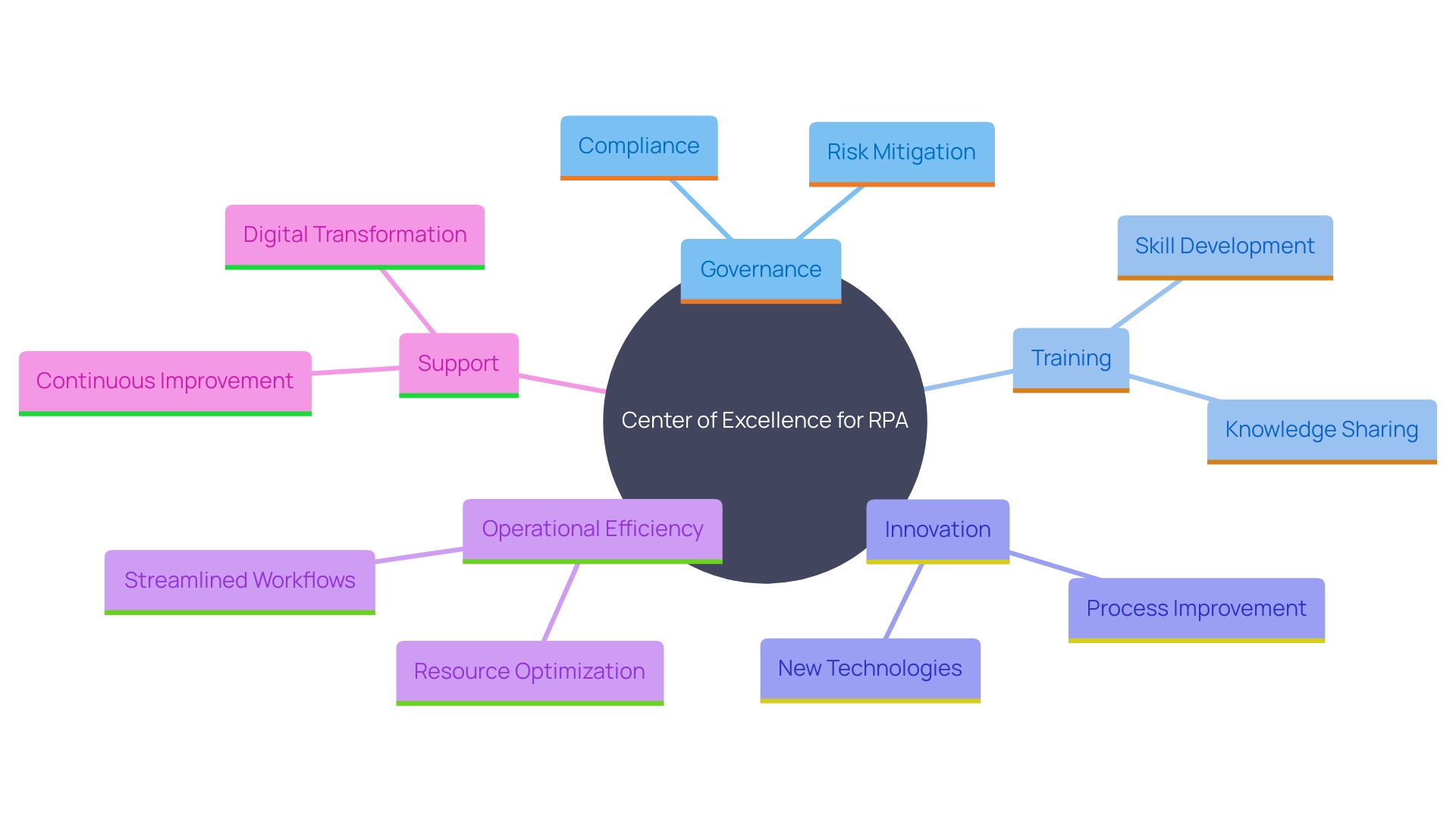
Measuring Performance and ROI
To validate the effectiveness of your RPA initiatives, it’s crucial to establish comprehensive metrics that measure performance and return on investment (ROI). Key metrics should include time savings, error reduction, and cost efficiency. For instance, Millennium Recycling, a leader in the recycling industry, has successfully incorporated mechanization to streamline their processes, resulting in significant time savings and error reductions. In the same way, St. James Winery, a prize-winning establishment, has utilized technology to improve operational efficiency and uphold high-quality standards. Frequently examining these metrics will assist you in evaluating the effect of mechanization on your operational performance and showing its worth to stakeholders. This ongoing analysis will also steer future mechanization efforts, ensuring they align with your business objectives and drive further enhancements. As Robert McElmurry, Director of Business Intelligence for the Association for Advancing Automation, advises, ‘Seize the potential of automation in an era where opportunities abound, costs are optimized, and capabilities are constantly evolving.’ By taking these steps, you’ll be well-equipped to optimize your RPA initiatives and achieve sustained operational excellence.
Best Practices for Sustainable RPA Implementation
Adopting best practices for RPA implementation is crucial for sustainability. Start with a pilot program to test and refine your approach before scaling. Leading companies like Bosch have demonstrated that methodical testing can lead to long-term success and innovation. Ensure robust change management strategies are in place to address resistance and foster buy-in from employees. ‘Rivian, for instance, has successfully implemented sustainable methods by fostering an environment of continuous adaptation and support.’. Ongoing training and support will assist teams in adjusting to new procedures. Furthermore, consistently reviewing and enhancing automated systems can assist in preserving relevance and efficiency as business requirements change. Industry leaders emphasize the importance of placing technology at the center of end-to-end process execution, enabling human expertise to flourish. By following these steps, organizations can achieve a seamless transition to digital transformation and sustain operational efficiency.
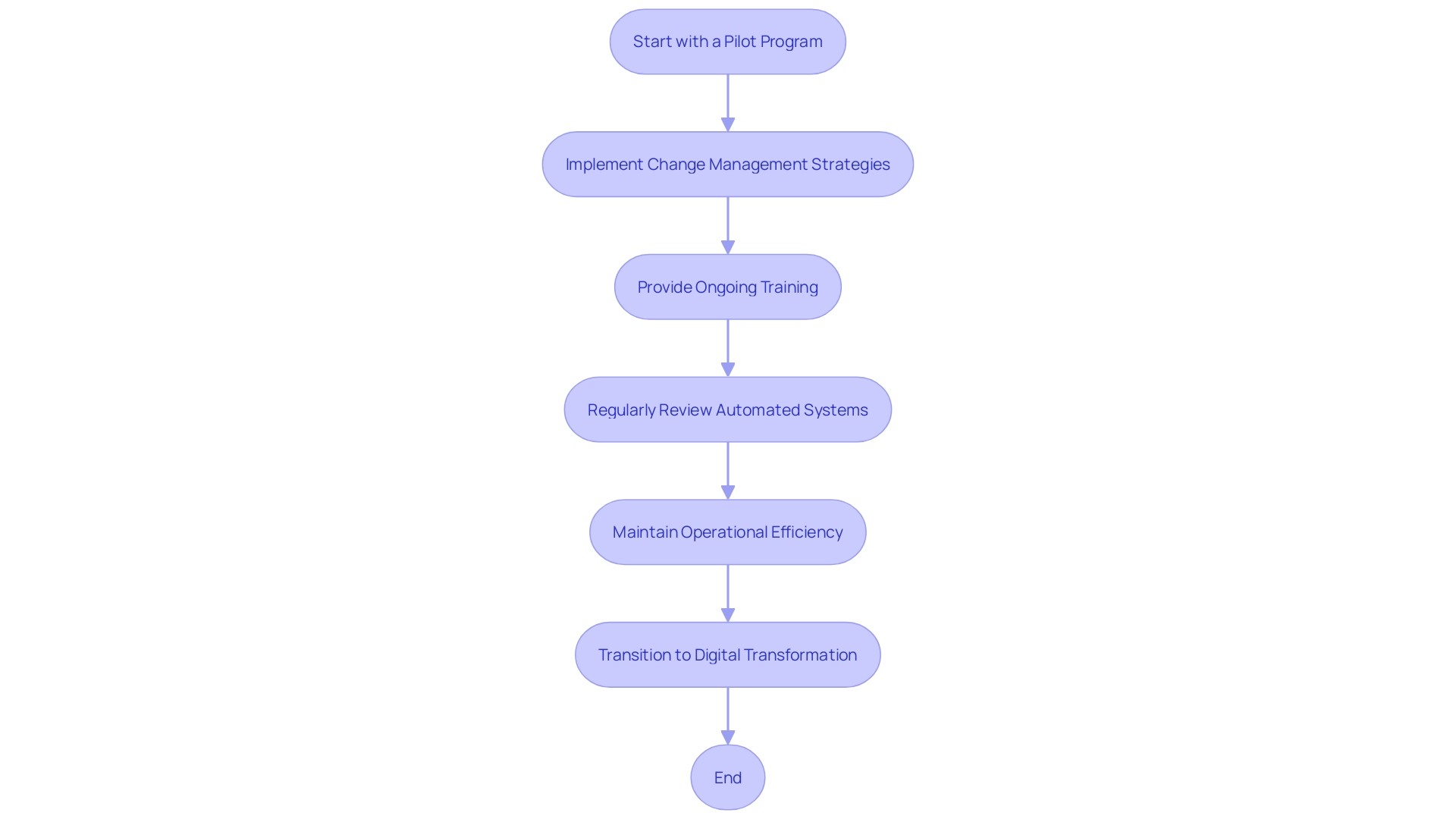
Conclusion
RPA presents a valuable opportunity for organizations to boost operational efficiency by automating repetitive tasks. The first step is to identify suitable processes, focusing on rule-based, high-volume tasks through stakeholder engagement and workflow mapping. This progression from digitization to digital transformation is key to redefining value creation.
A well-defined RPA strategy aligns automation goals with business objectives. By setting clear targets and evaluating the technological landscape, organizations can create a roadmap for successful implementation, allowing employees to concentrate on high-value tasks and drive innovation.
Establishing a Center of Excellence (CoE) is crucial for sustaining RPA initiatives. This cross-functional team governs RPA practices, fosters continuous improvement, and shares best practices, enhancing overall efficiency and adaptability.
Measuring performance and ROI is essential for validating RPA effectiveness. By establishing key metrics and conducting regular reviews, organizations can showcase the value of automation and refine future efforts. Adopting best practices, such as pilot programs and change management strategies, further strengthens the foundation for sustainable RPA implementation.
By embracing these strategies, organizations can effectively navigate the complexities of RPA and achieve lasting operational excellence.

